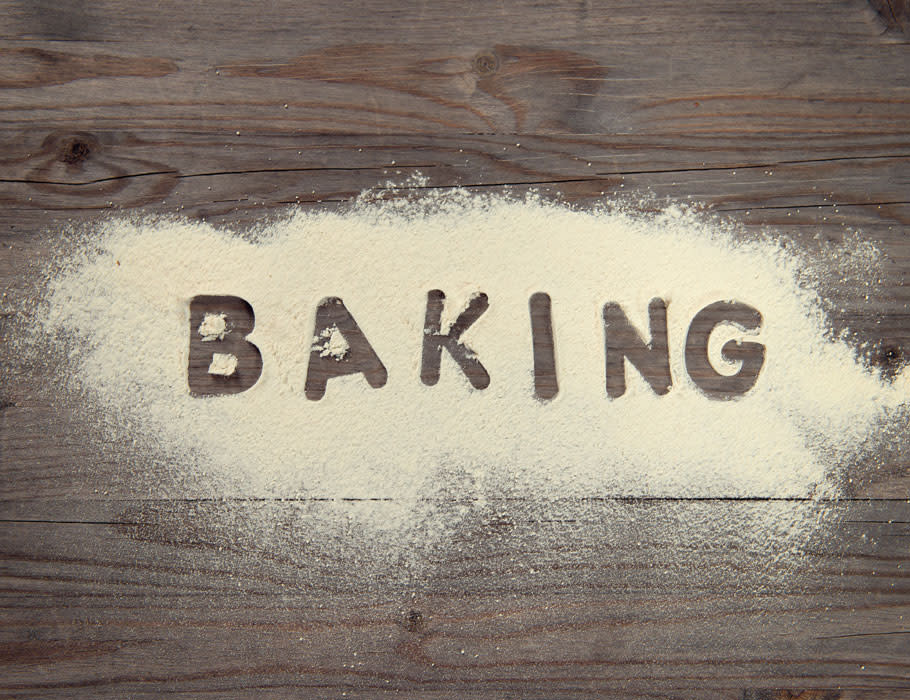Baking Soda vs. Baking Powder: What’s The Difference?
Have you ever had a baking disaster like an overflowing quick bread, or a cratered cake? It’s happened to experienced and amateur bakers alike, and the most likely culprit: mixing up the baking soda and baking powder. It’s easy to do, they’re both types of chemical leaveners They also look similar and have similar names. But that’s where the similarity ends. So, what is the difference between them?
by Robin Stephens

Photo: Getty Images
(Note: This post contains affiliate links. As an Amazon Associate, we earn from qualifying purchases made through affiliate links.)
What is Baking Soda?
Let’s look first at baking soda, the commercial name for sodium bicarbonate. Baking soda is a base and needs both a liquid and an acidic ingredient to activate. Once activated, a chemical reaction happens, carbon dioxide is produced, and those bubbles provide the lift you’re looking for. When a recipe calls for baking soda it usually calls for some sort of acidic ingredient such as buttermilk, brown sugar, yogurt, lemon juice, vinegar, cream of tartar, molasses, applesauce, natural cocoa powder (but not dutch process), and honey. The acidity in these types of ingredients react with the baking soda to produce the carbon dioxide and allow your baked goods to rise. It’s important to remember this reaction starts right away so you need to get the batter into the oven quickly. Baking soda is strong, about 3-4 times stronger than baking powder. But more baking soda isn’t necessarily a good thing, and doesn’t always mean more rise. if you use too much baking soda and not enough acid, there will be leftover baking soda in the recipe. Not a good thing - it leaves a soapy, metallic taste in your baked goods.
Baking soda is the leavening agent used in baked goods like cakes, muffins, and cookies, like our favorite Classic Chocolate Chip Cookies.
What is baking powder?
Well, unlike baking soda, baking powder is a complete leavening agent, which means it contains the base and the acid needed to produce the rise. Baking powder contains baking soda, cream of tartar (a dry acid), and sometimes cornstarch. What this means is that all baking powder needs is liquid to activate. Most of the baking powder on the market is “double-action”, or a two-part reaction. It’s activated first by the liquid in the recipe and the second occurs more slowly by the heat of the oven. That’s why recipes using baking powder give you a little more flexibility. You can let the batter or dough sit for a little while before baking and still get the rise you need. Baking powder already contains an acid, so it’s most often used in a recipe that doesn’t call for an additional acidic ingredient. However, you can still use it in recipes calling for acidic ingredients like our Rhubarb-Lemon Muffins with streusel topping.
Why do some recipes call for both? If a recipe calls for some sort of acid, say lemon juice or brown sugar, but not enough carbon dioxide will be created from the acid and baking soda to fully leaven the batter, then baking powder is used to add the extra lift. Sometimes you need more leavening than you have acid available so adding baking powder fills the gap. It’s all about balancing flavor and texture. When baking soda reacts with an acid, it neutralizes it and makes the batter more alkaline. This takes away the tartness the acid adds, and sometimes you want it. Or if there is extra baking soda left after the reaction, it gives the baked good a soapy flavor. No one wants that, right? The amounts of baking soda and baking powder need to be in balance to get the right level of flavor and airiness. These Buttermilk Biscuits are the perfect blend of both.
Finally, don’t forget that they expire! Every can has a best by date on it. This is a good guide, but remember once you open the can or box, the product is going to start losing freshness. It’s a good idea to write the date open date on the container and give them a check for freshness every three months or so.
How to Test Baking Powder & Baking Soda for Freshness
To test baking powder, measure out 3 Tbsp. warm water with our favorite measuring spoons into a small mixing bowl. Add ½ tsp. of baking powder and stir. The mixture should fizz a little if it’s fresh. If it doesn’t, toss it out and buy a fresh package.
To test baking soda, pour 3 Tbsp. white distilled vinegar into a small bowl. Add ½ tsp. baking soda and stir. The mixture should really bubble if it’s fresh. If no reaction, toss it out and buy fresh.
Equipment/Special Ingredients Needed
Want to give this technique a try?
Check out our recommendations for the necessary equipment and ingredients to make this recipe. All products featured on Cuisine at Home are independently selected by our editors; we may earn an affiliate commission from qualifying purchases through our links.



